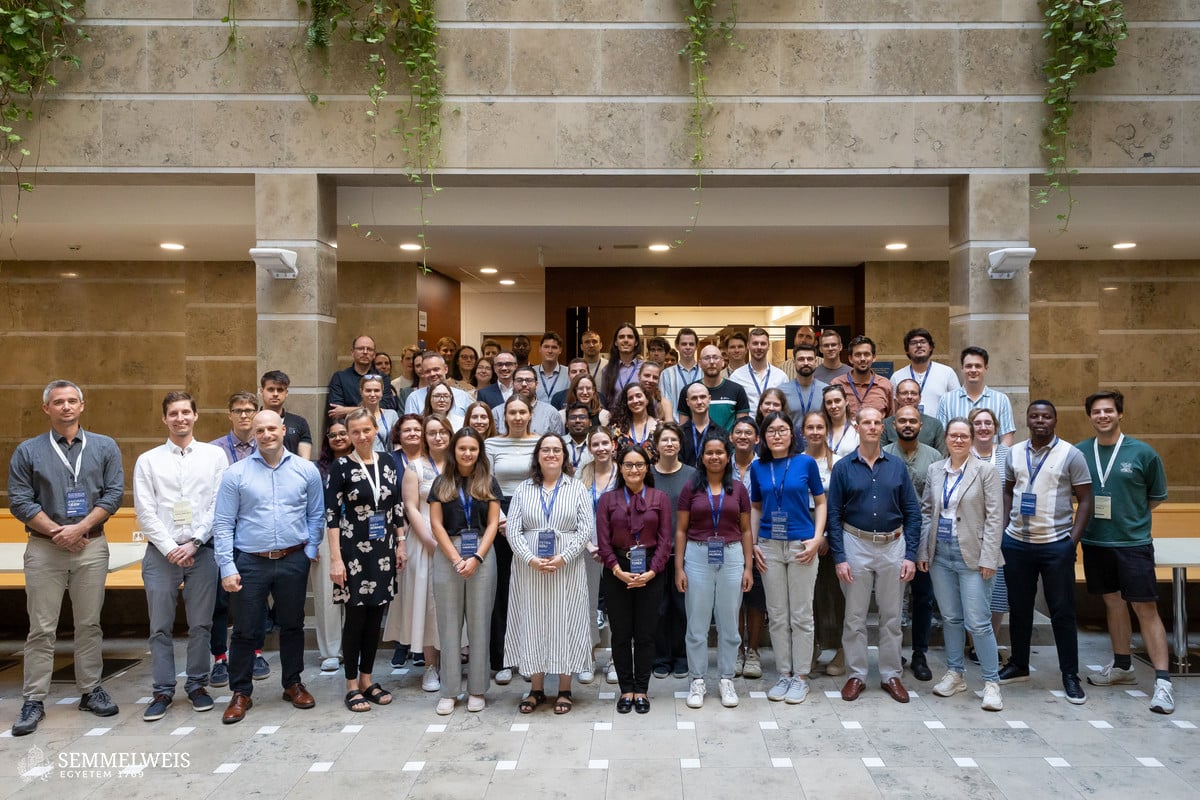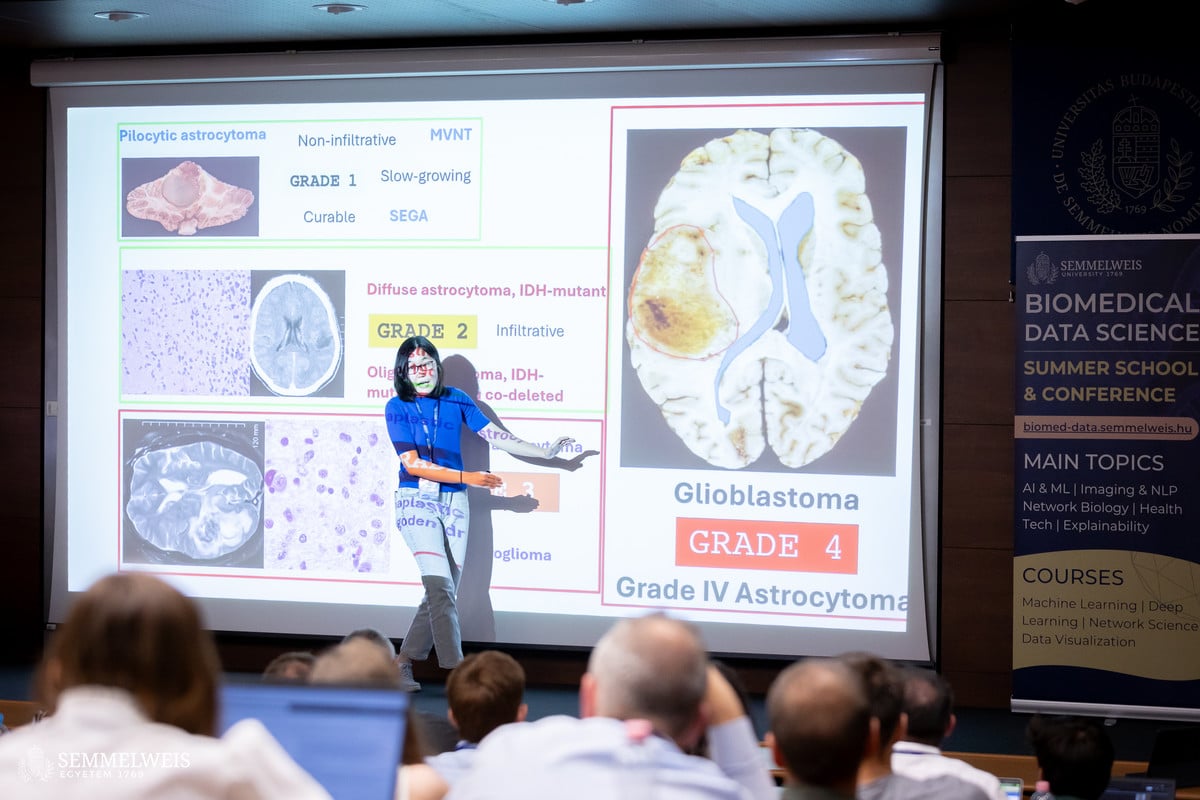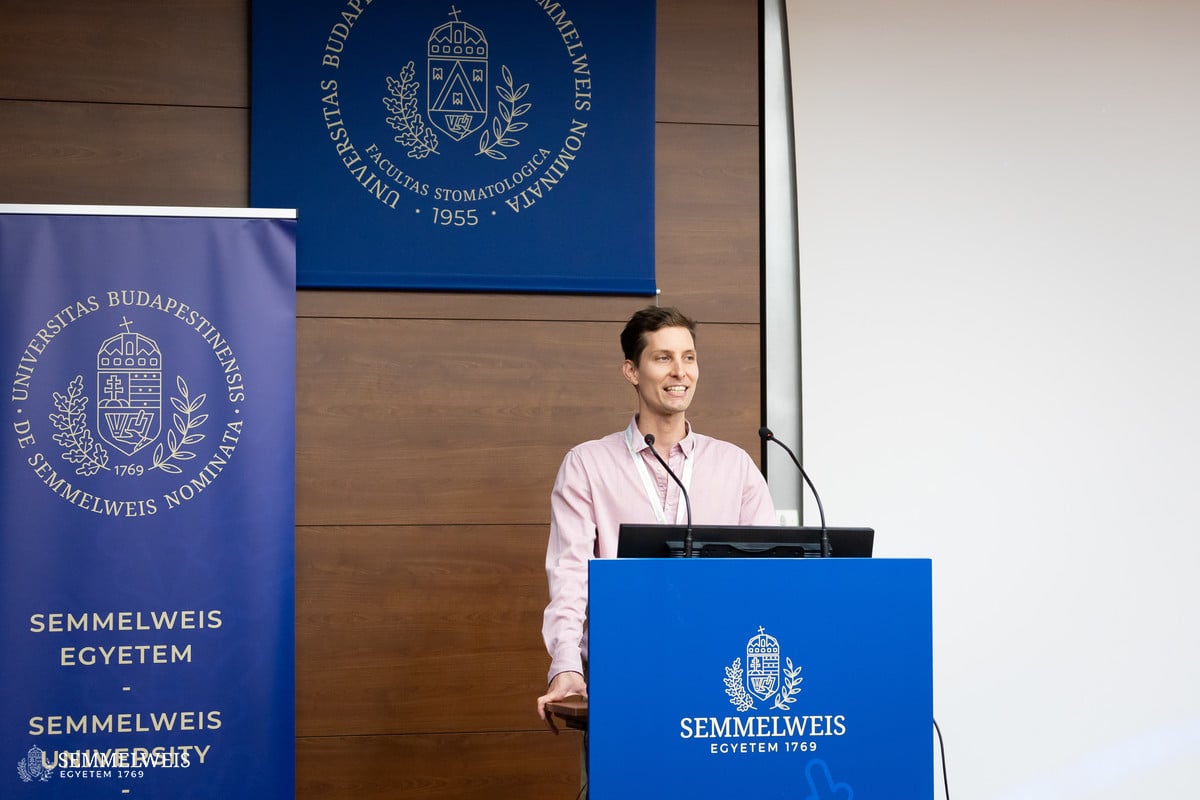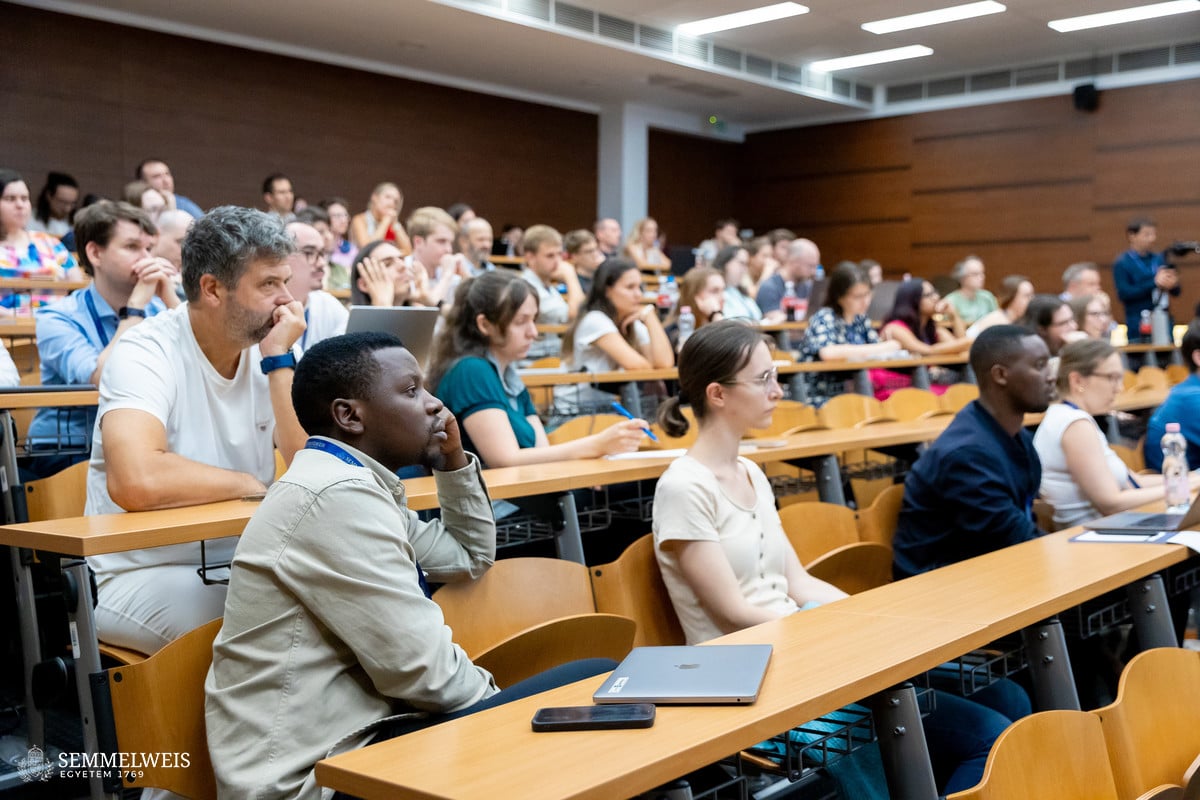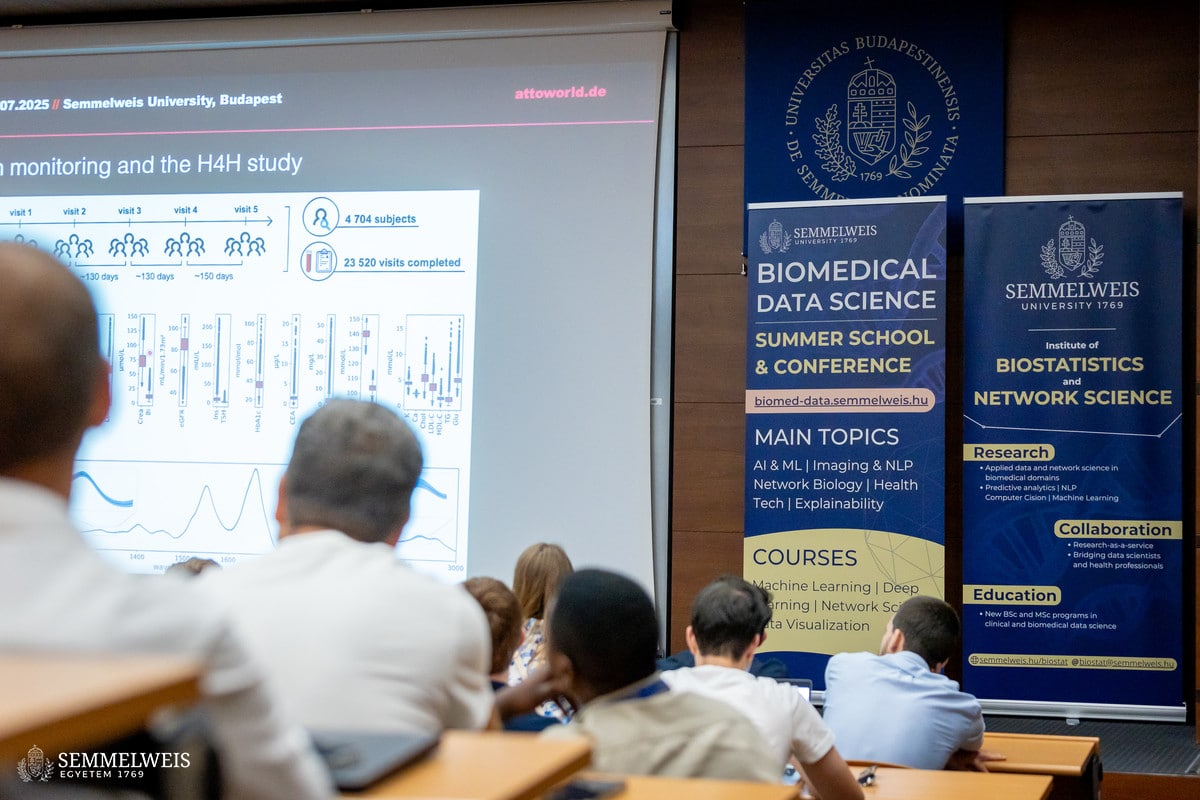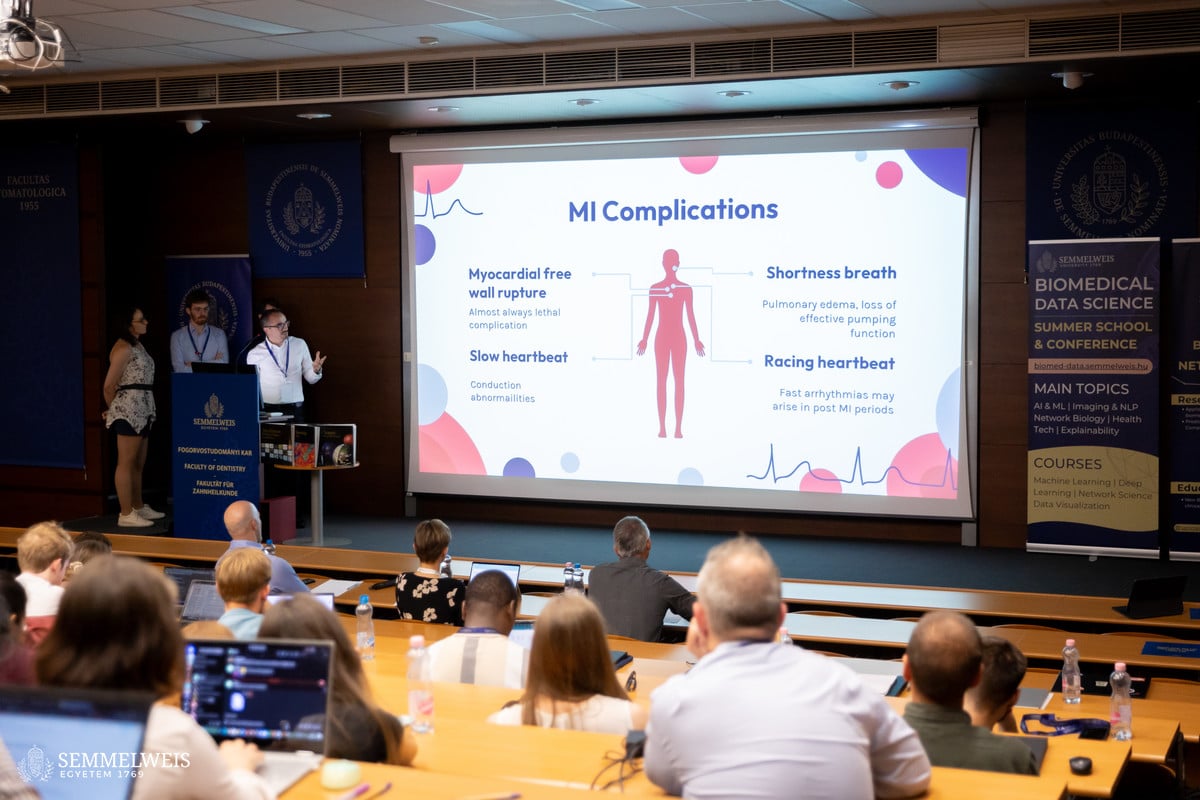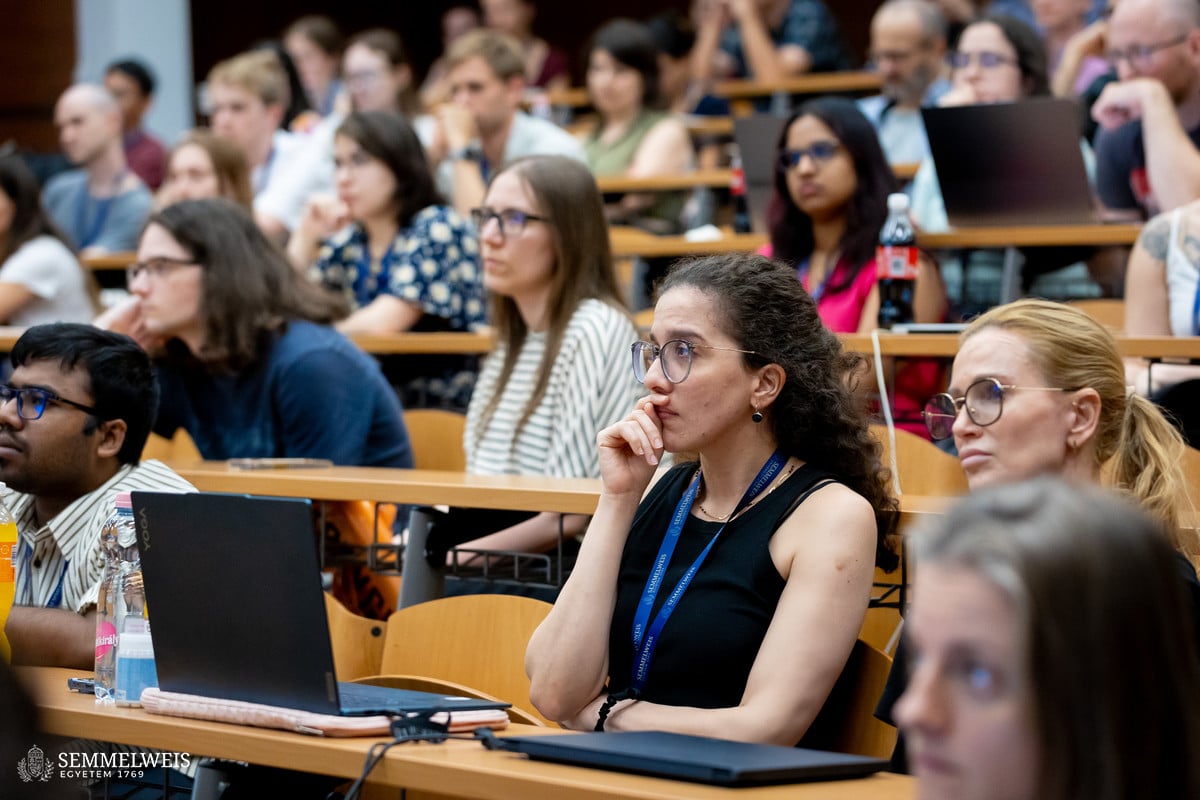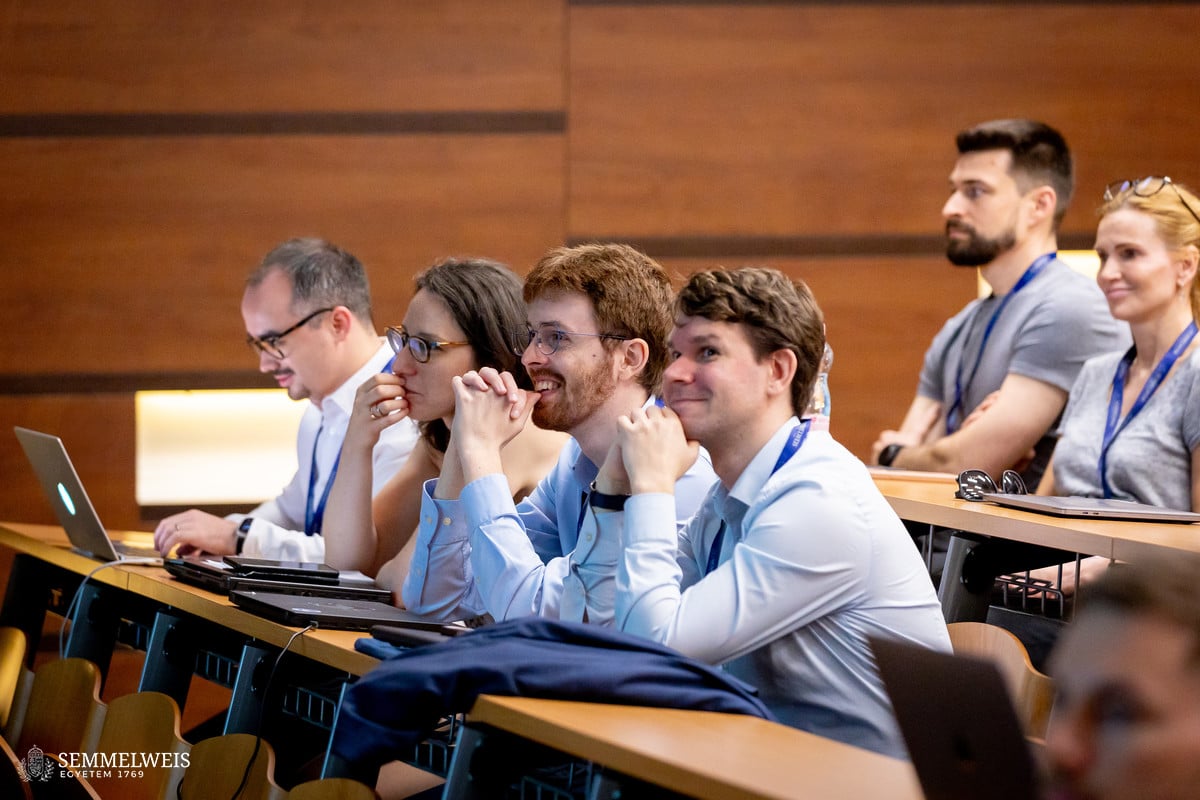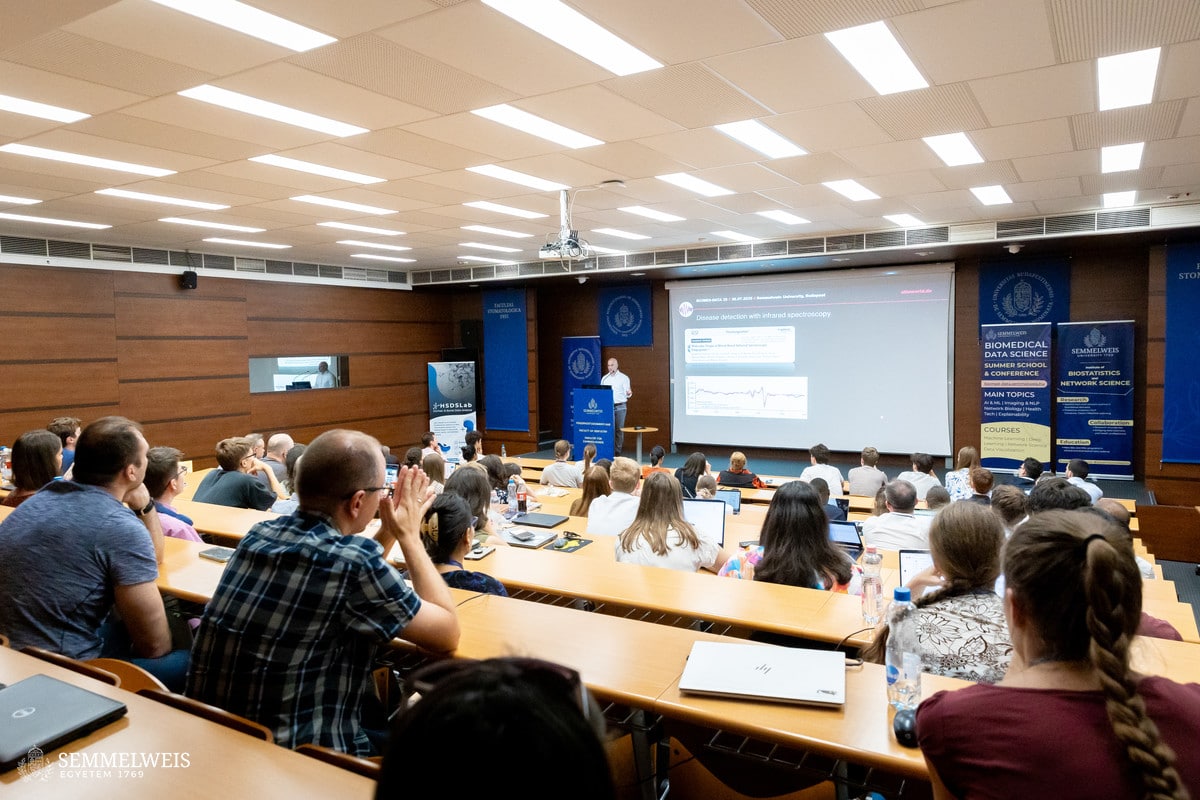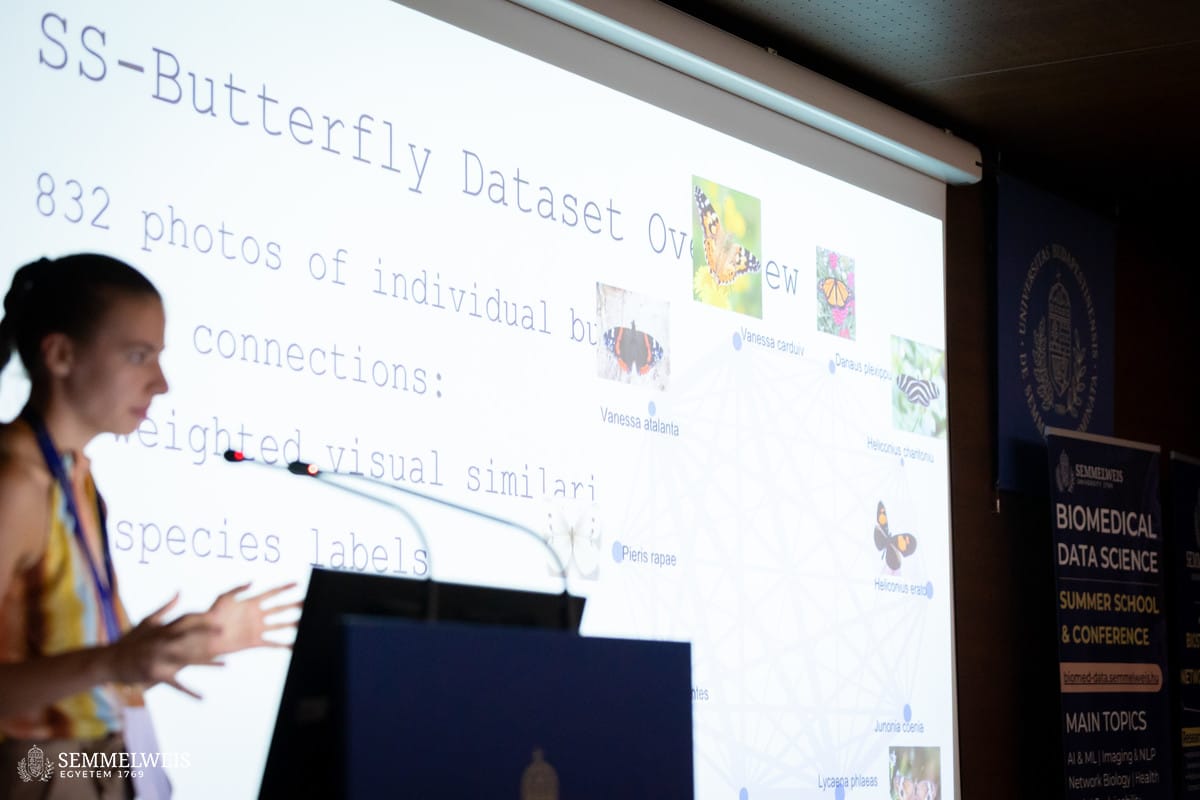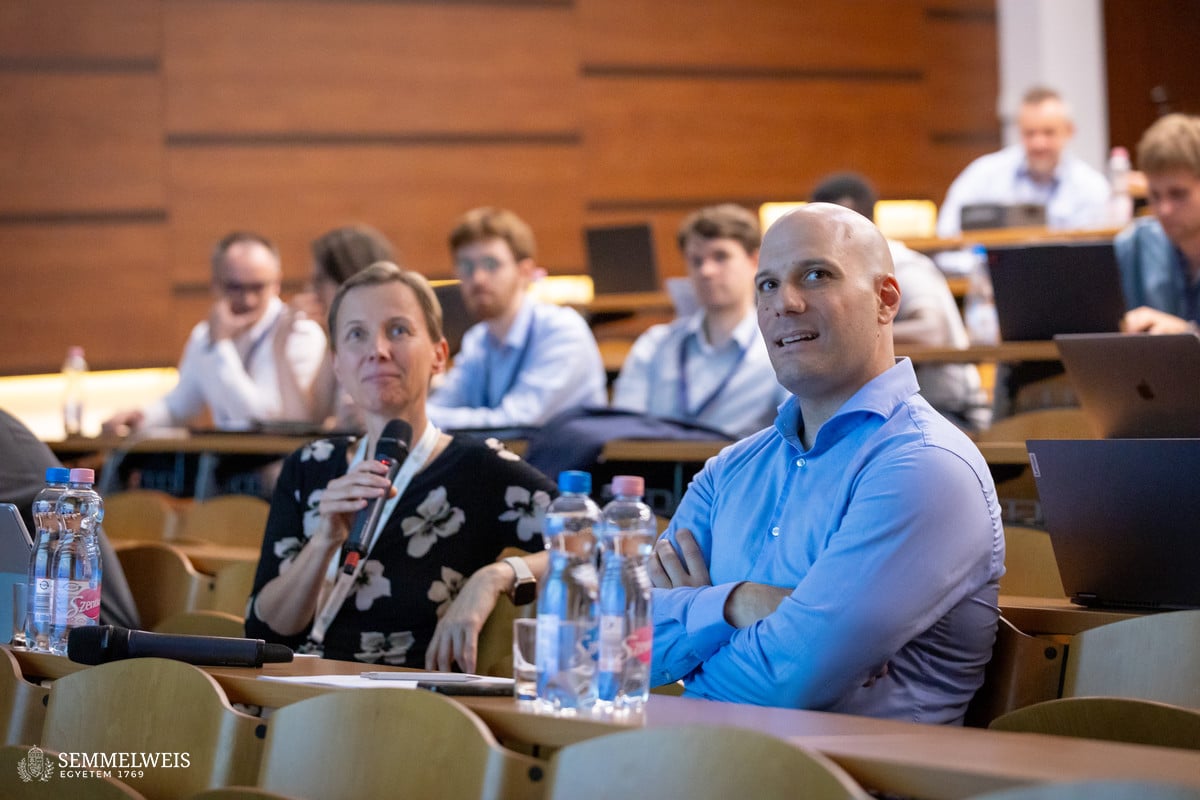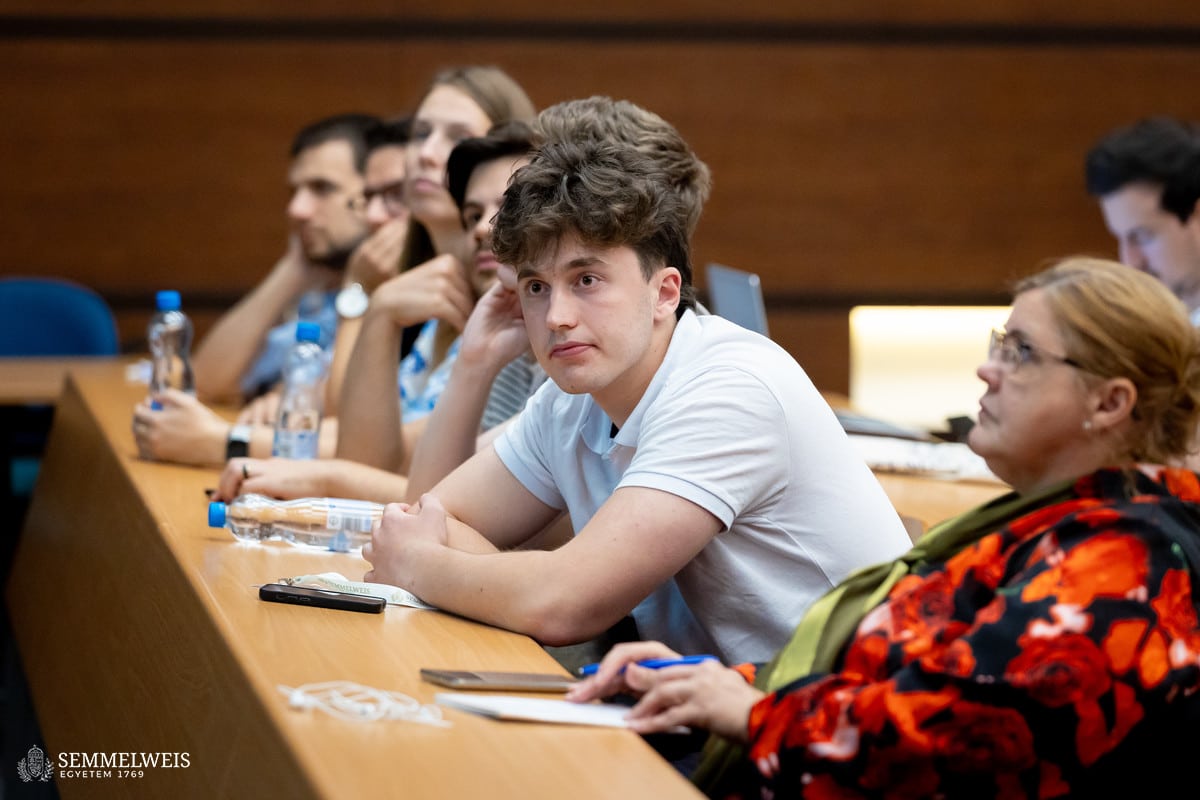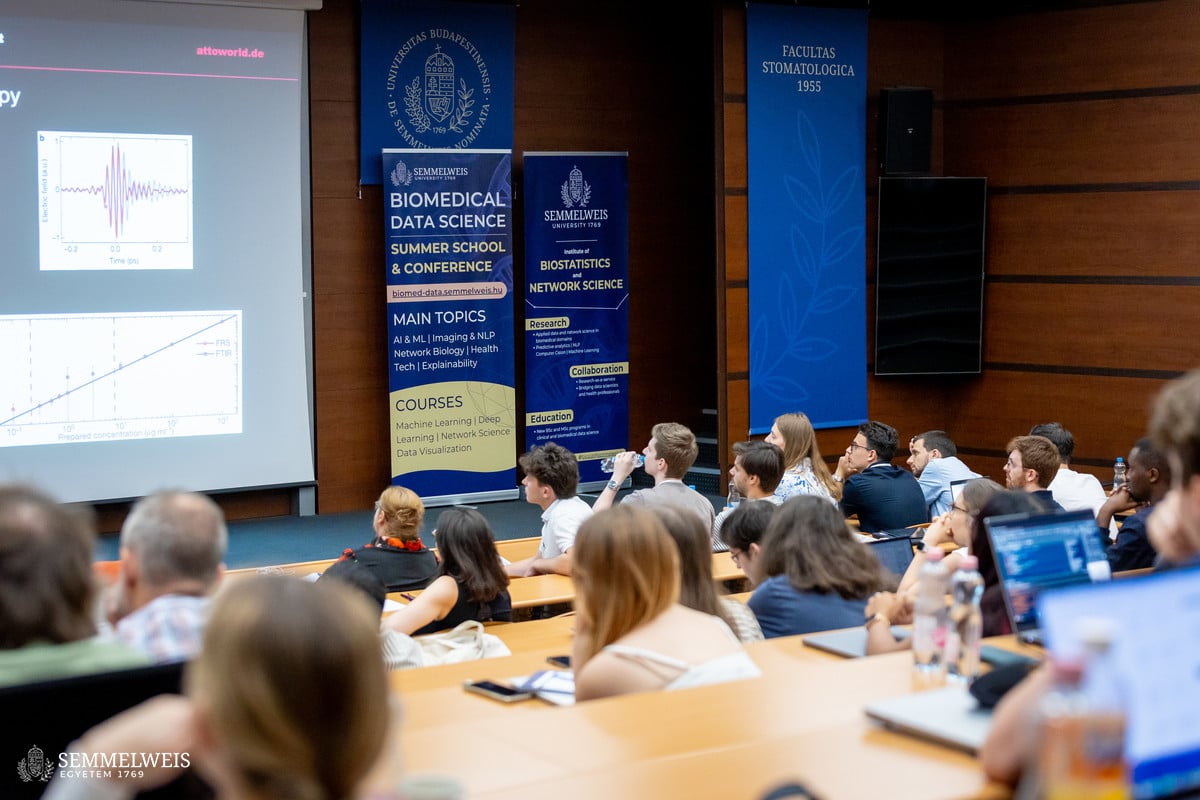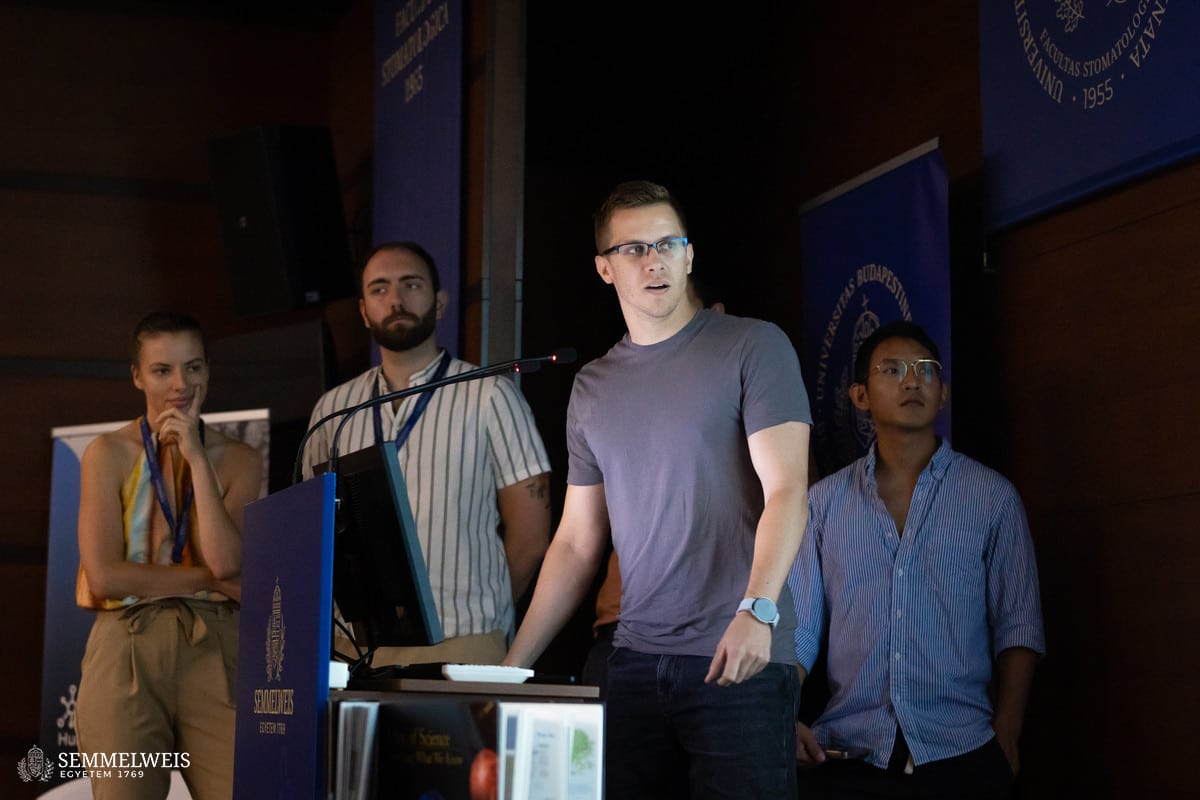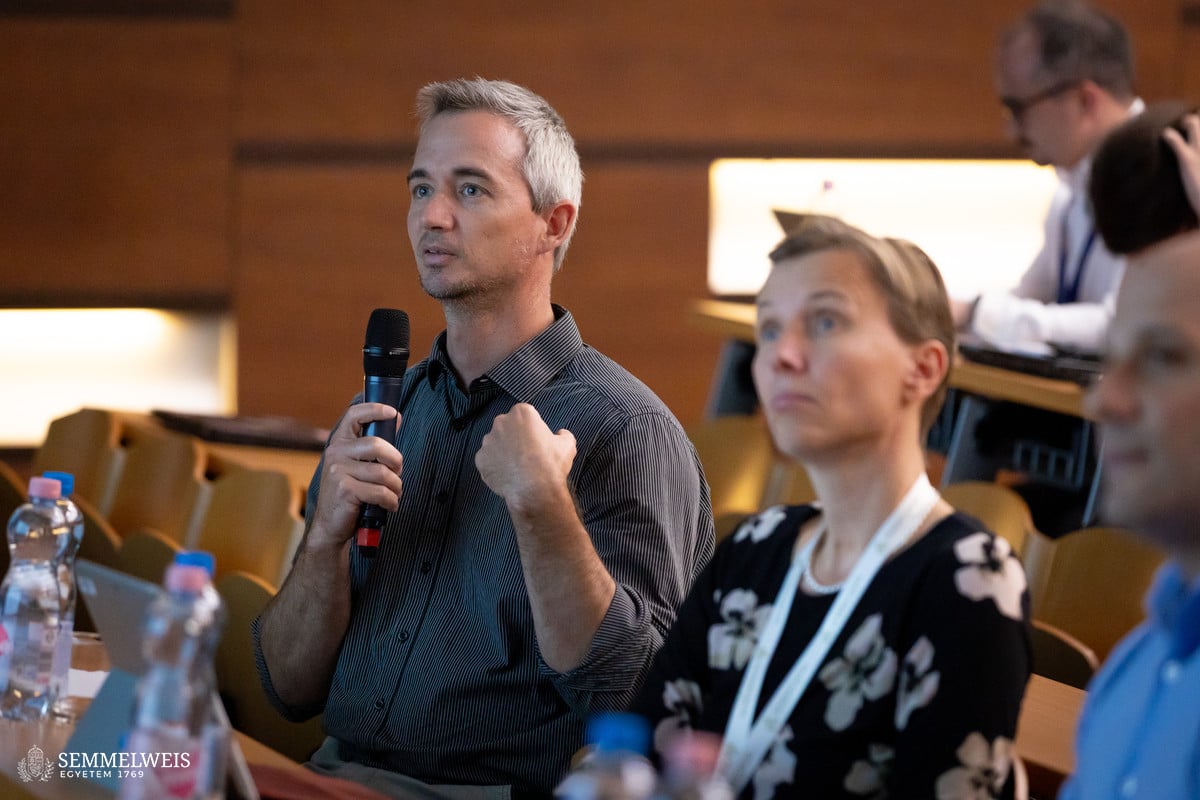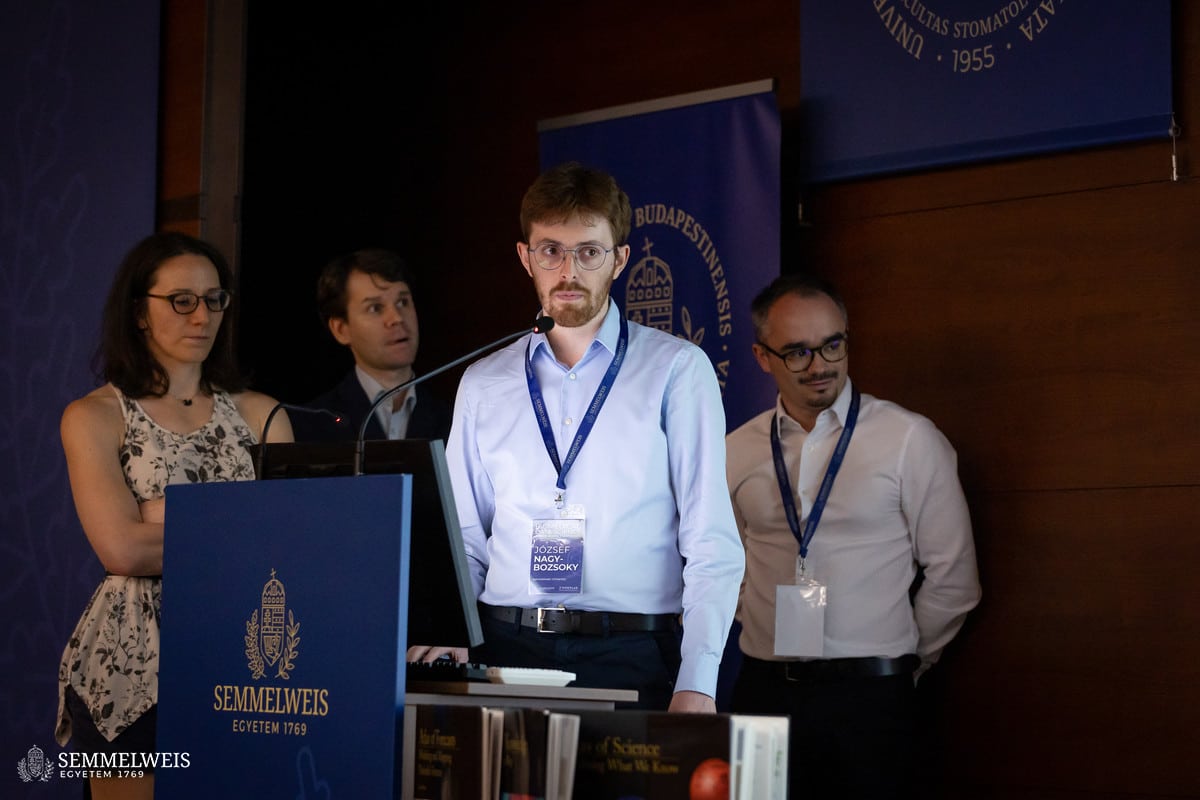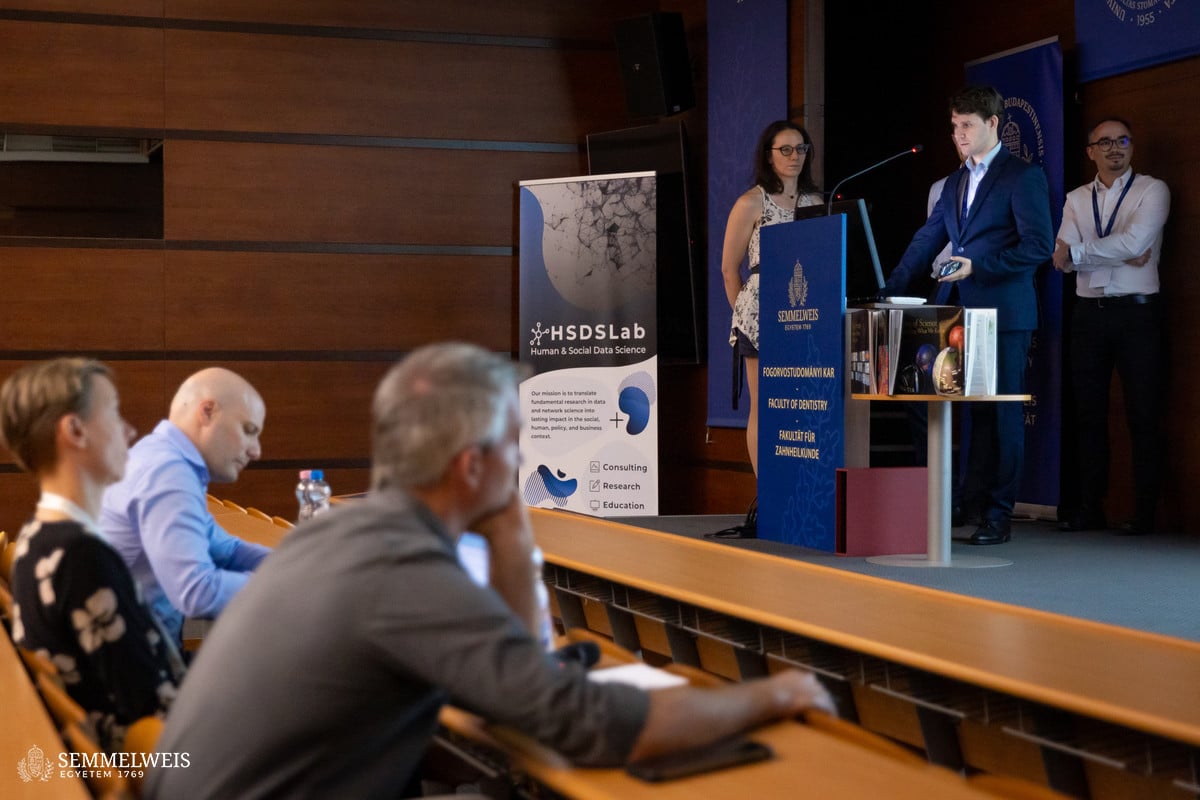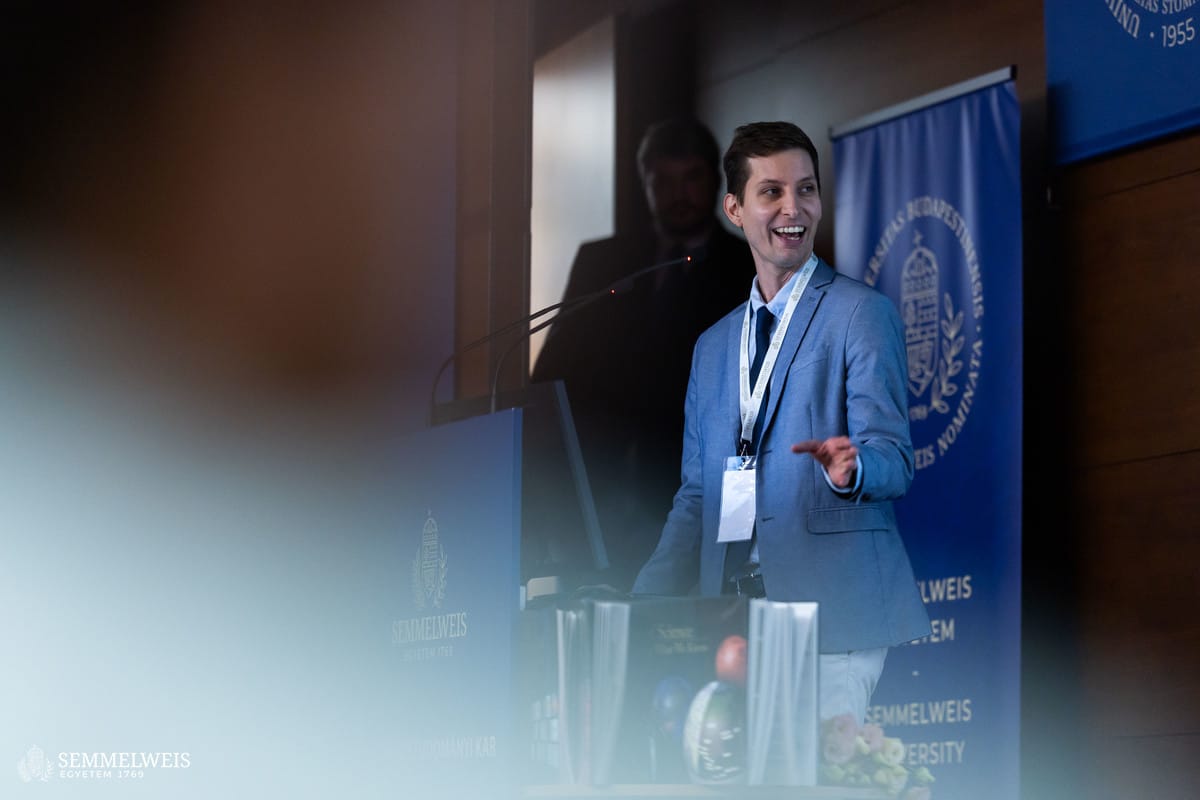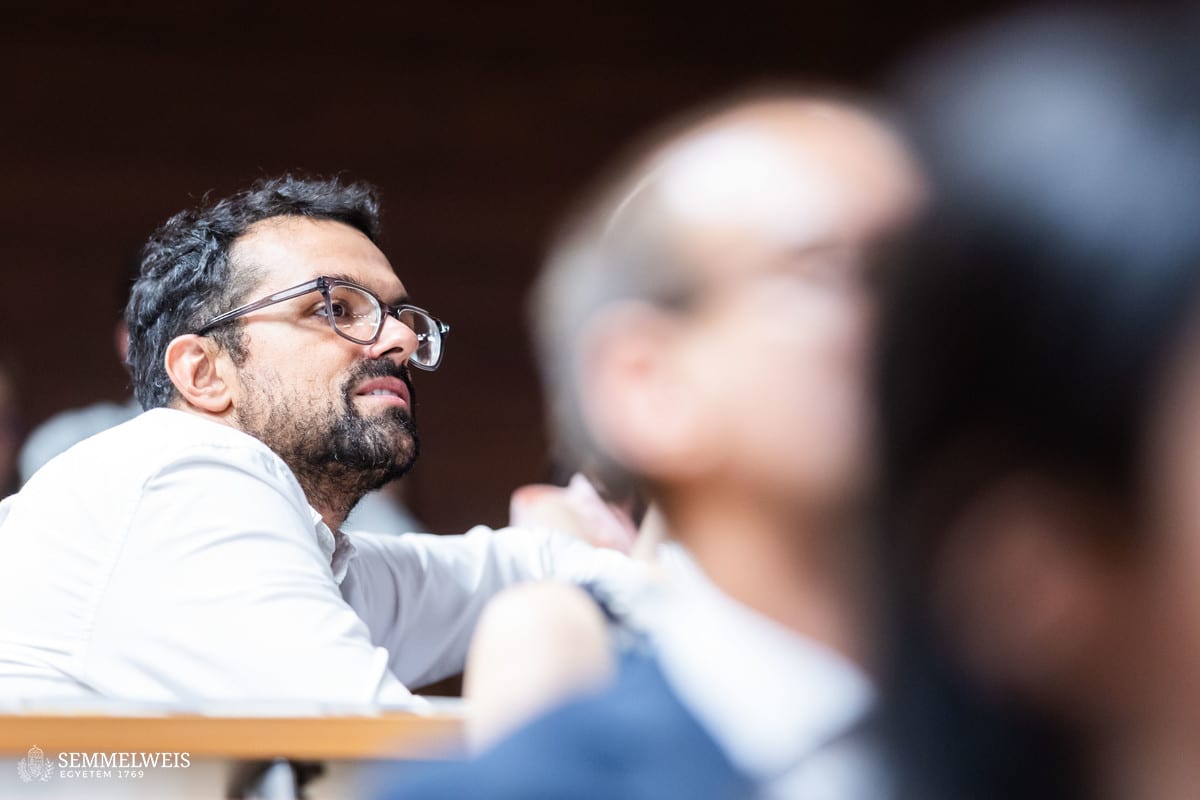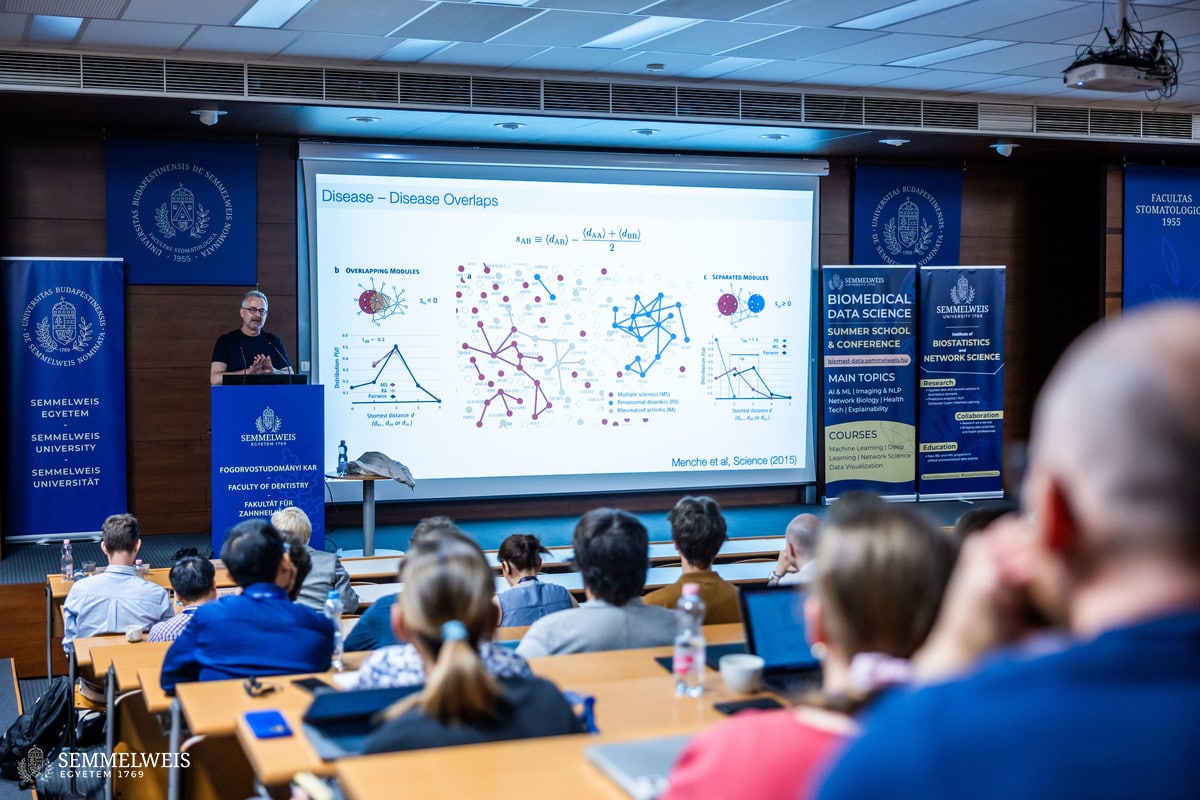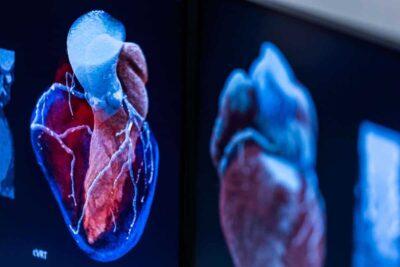The two-part event began with a summer school at the end of July, which primarily addressed issues related to biomedical network science, medical data visualization, machine learning based on medical data, and deep learning based on unstructured data. Presentations were given by Dr. Kosmas Kepesidis, Chief Data Scientist at the Center for Molecular Fingerprinting (CMF), Research Group Lead at Ludwig Maximilian University of Munich (LMU), and Senior Scientist at the Max Planck Institute for Quantum Optics; Dr. Katy Börner, professor at Indiana University in the United States; Dr. András Gézsi, Associate Professor at the Budapest University of Technology and Economics (BME); and Dr. Gergely Palla, Professor at Eötvös Loránd University and Associate Professor at Semmelweis University’s Health Services Management Training Center.
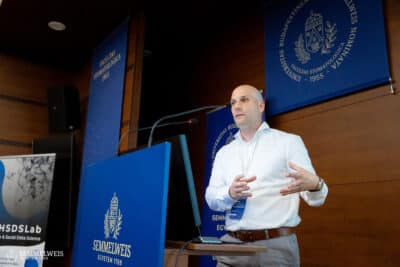 Dr. Kosmas Kepesidis presented his research conducted jointly with Nobel Prize-winning scientist Dr. Ferenc Krausz in an open lecture entitled “Health Monitoring and Early Disease Detection Using Cutting-edge Physical Metrology.” The essence of their research is that infrared spectroscopy, i.e., spectral analysis, involves emitting infrared electromagnetic radiation onto a blood sample to observe the extent to which the molecules in the blood absorb the light, thereby enabling them to map the molecular bonds. The patterns of emerging spectra, known as “infrared digital fingerprints,” have been proven to show stable long-term values and to be unique to each individual. These biomarkers were shown to be suitable for detecting various non-infectious diseases, such as cancer or metabolic disorders, and their signal strength can be used to determine the progression of the disease and even the patient’s prognosis. This technology serves as the basis for the clinical research program Health for Hungary – Hungary for Health (H4H).
Dr. Kosmas Kepesidis presented his research conducted jointly with Nobel Prize-winning scientist Dr. Ferenc Krausz in an open lecture entitled “Health Monitoring and Early Disease Detection Using Cutting-edge Physical Metrology.” The essence of their research is that infrared spectroscopy, i.e., spectral analysis, involves emitting infrared electromagnetic radiation onto a blood sample to observe the extent to which the molecules in the blood absorb the light, thereby enabling them to map the molecular bonds. The patterns of emerging spectra, known as “infrared digital fingerprints,” have been proven to show stable long-term values and to be unique to each individual. These biomarkers were shown to be suitable for detecting various non-infectious diseases, such as cancer or metabolic disorders, and their signal strength can be used to determine the progression of the disease and even the patient’s prognosis. This technology serves as the basis for the clinical research program Health for Hungary – Hungary for Health (H4H).
The H4H program, which is expected to involve 15,000 participants over 10 years, could contribute to the development of a new, reliable, and cost-effective diagnostic tool that can detect certain conditions – such as cancer, cardiovascular disease, and diabetes – at the molecular level before the onset of symptoms.
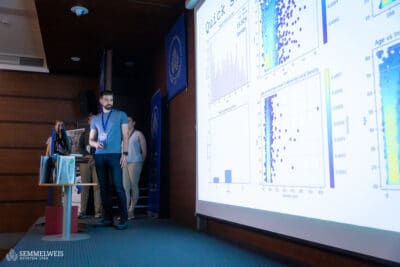 The summer school integrated network science, statistics, machine learning, and data visualization with biomedical applications through intensive, hands-on workshops, thereby connecting different scientific fields. The 73 participants from 11 countries were able to deepen the knowledge gained in the theoretical lectures through data-driven projects conducted in the Python programming language, using real medical datasets. They learned which methods and tools could be used for structured (tabular), unstructured (usually visual or linguistic), and networked data. Then, they presented what they had mastered in groups of 13 as part of a project to a panel of experts.
The summer school integrated network science, statistics, machine learning, and data visualization with biomedical applications through intensive, hands-on workshops, thereby connecting different scientific fields. The 73 participants from 11 countries were able to deepen the knowledge gained in the theoretical lectures through data-driven projects conducted in the Python programming language, using real medical datasets. They learned which methods and tools could be used for structured (tabular), unstructured (usually visual or linguistic), and networked data. Then, they presented what they had mastered in groups of 13 as part of a project to a panel of experts.
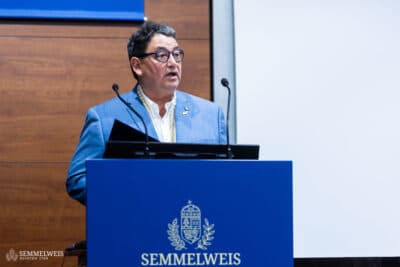 At the opening of the conference that followed the summer school, Dr. Béla Merkely, Rector of Semmelweis University, emphasized that data-driven solutions and approaches were receiving increasing attention in medicine and health sciences. This is also the reason why the university established the Institute of Biostatistics and Network Science last academic year. The institute’s premiere event is closely aligned with the university’s strategic goal of playing a leading role in health data science and clinical informatics. The rector pointed out that Semmelweis University was the largest healthcare provider in the country, with one in ten Hungarian patients receiving treatment there, which made the institution a leader at the regional level as well. Accordingly, it generates a large amount of diverse healthcare data, which requires cross-disciplinary analysis, with special regard to data-driven decision support and artificial intelligence applications.
At the opening of the conference that followed the summer school, Dr. Béla Merkely, Rector of Semmelweis University, emphasized that data-driven solutions and approaches were receiving increasing attention in medicine and health sciences. This is also the reason why the university established the Institute of Biostatistics and Network Science last academic year. The institute’s premiere event is closely aligned with the university’s strategic goal of playing a leading role in health data science and clinical informatics. The rector pointed out that Semmelweis University was the largest healthcare provider in the country, with one in ten Hungarian patients receiving treatment there, which made the institution a leader at the regional level as well. Accordingly, it generates a large amount of diverse healthcare data, which requires cross-disciplinary analysis, with special regard to data-driven decision support and artificial intelligence applications.
Our goal is for the tradition-setting summer school and the current conference to highlight the unique opportunities that the vast amount of data and information offers in the field of medicine and health sciences: Opportunities to develop even more effective, innovative therapies and treatments, to find answers to the questions that traditional medicine has not yet been able to solve.
– Dr. Béla Merkely
A total of 83 participants and speakers from 14 countries attended the three-day conference, where they had the opportunity to enjoy keynote presentations by Dr. Katy Börner, Dr. Albert-László Barabási, Professor at Northeastern University and Harvard Medical School, Dr. Pál Maurovich Horvat, Director of the Medical Imaging Center, and Dr. Péter Horváth, Senior Group Leader at Helmholtz Munich and Director of the Institute of Biochemistry at the HUN-REN Biological Research Center in Szeged. Conference speakers shared their research in regular and lightning talks, as well as poster presentations.
After the intense agenda, participants could continue networking at social events, including a visit to the castle town Visegrád on the bank of the Danube at the weekend and an exhibition on data visualization by Dr. Katy Börner on the opening night of the conference. The Places & Spaces: Mapping Science, curated by Indiana University, illustrates how graphical representations of data can highlight scientific knowledge. It has been displayed in close to 400 venues across six continents and 28 countries.
 Dr. Roland Molontay, Head of the Organizing Committee, Director of the Institute of Biostatistics and Network Science, and Head of HSDSLab at the Budapest University of Technology and Economics, pointed out that the interdisciplinary summer training program filled a market niche by offering its participants scientific knowledge and professional training opportunities. “I have been teaching data science for a decade and have seen quite a few student projects, so I have a frame of reference. I was impressed by how far the summer school participants were able to get in such a short time,” he said, assessing student performance. “I am delighted that both the organization and the professional content of the summer school and conference received extremely positive feedback from the audience and speakers, who expressed their desire for the event to continue,” the director noted.
Dr. Roland Molontay, Head of the Organizing Committee, Director of the Institute of Biostatistics and Network Science, and Head of HSDSLab at the Budapest University of Technology and Economics, pointed out that the interdisciplinary summer training program filled a market niche by offering its participants scientific knowledge and professional training opportunities. “I have been teaching data science for a decade and have seen quite a few student projects, so I have a frame of reference. I was impressed by how far the summer school participants were able to get in such a short time,” he said, assessing student performance. “I am delighted that both the organization and the professional content of the summer school and conference received extremely positive feedback from the audience and speakers, who expressed their desire for the event to continue,” the director noted.
Established in October 2024, the Institute of Biostatistics and Network Science offers clinical and biomedical data scientist training in English, conducts data and network science research, and supports the resolution of biomedical research questions with advanced mathematical and computational methodologies to help answer biomedical research questions, with a particular focus on computer vision, natural language processing, predictive analytics, artificial intelligence, and network science. The institute aims to process complex biomedical data from healthcare systems and its own data collections using modern statistical, network science, and artificial intelligence tools. Through interdisciplinary collaboration, doctors, statisticians, and data scientists work together to develop rapidly deployable data-driven innovations that support clinical decision-making and personalized medicine.
Judit Szabados-Dőtsch
Photos by Bálint Barta, Boglárka Zellei – Semmelweis University
